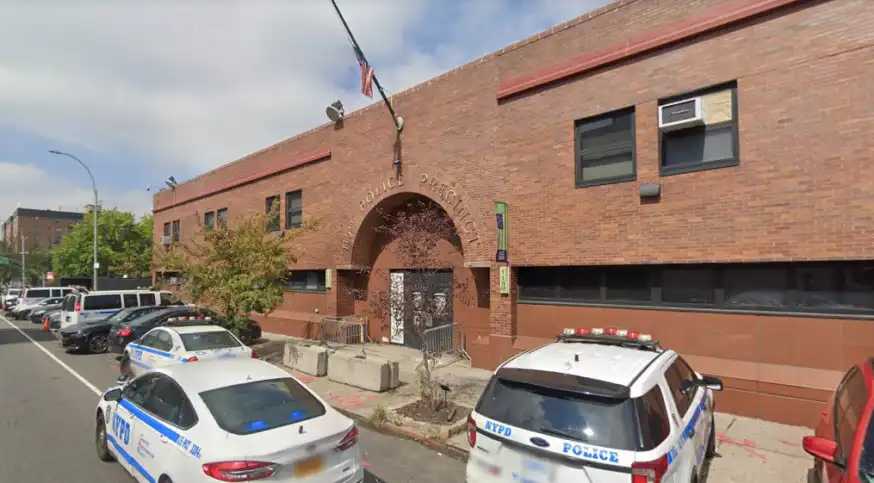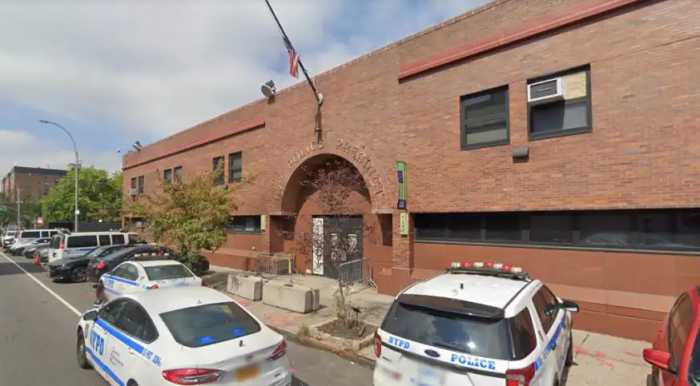By Lincoln Anderson
Steven Vincent of E. 11th St., who was murdered on Aug. 2 in Basra, will go down in history as the first American journalist killed in Iraq. But before his tragic end he also carved a place for himself in East Village history as a core member of the group that brought City Councilmember Antonio Pagan to power and helped bring about the cleanup of Tompkins Square Park.
Vincent, 49, an art journalist turned war correspondent, had returned to Iraq three months ago for his third visit there since the start of the war. He was planning to come back to the East Village in mid-August to write a book on the history of the city of Basra. The Sunday before his murder he had written a column that ran in The New York Times charging that insurgents had infiltrated the Iraqi police in Basra and were acting as a death squad.
Speaking last Sunday, Lisa Ramaci, Vincent’s widow, said she felt the Times column probably is what caused his death.
“I’m going to say that was the straw that broke the camel’s back,” she said. “He was going around asking a lot of probing questions, including to a lot of [radical cleric] Motaq al-Sadr’s men. He was going around with a female translator — that was offensive to them. Steve was saying Basra had fallen under the control of radical Shiites — and they want women to walk around in a bag. I think he was basically killed to shut him up. Steve pulled no punches, he called them as he saw them, and that’s why he’s dead,” Ramaci said.
Vincent and his translator were abducted by masked gunmen after he had left a money-changing business. Vincent was shot once in the head and four times in the torso, according to Ramaci. His interpreter was shot three times in the chest, but survived. Ramaci said official sources told her that the two were taken to a warehouse where their captors were overheard shouting and cursing at them for five or six hours — calling Vincent an infidel and his translator a whore — before they were killed.
Ramaci said the translator is being held at a military hospital and believes she can identify two of the perpetrators.
Vincent had visited Iraq twice before, in the fall of 2003 and in early 2004. These trips produced a book, “In the Red Zone.” He also wrote for the National Review and Christian Science Monitor while in Iraq.
On 9/11, Vincent had watched from his rooftop as the second hijacked jet hit the twin towers and then and there decided to write about political issues.
“He didn’t sleep for weeks. He was so freaked out at what he saw,” Ramaci said. “He didn’t want to go back to art journalism.
Ramaci said Vincent, who was of Armenian descent, had become fascinated with Islam and had read the Koran and tons of books about the religion.
Before leaving for Iraq this last time, Ramaci said Vincent told her that if he got killed it should be considered “a casualty of war — and you can chalk me up as one more victim of the World Trade Center.”
Vincent was from California and hitchhiked his way to New York. He and Ramaci met while they were smoking in the lobby of a Times Square movie theater showing “The Road Warrior.”
Under the former Homesteader program, Ramaci had helped fix up a building on E. 11th St. that the city took from a derelict landlord, and two years after they met, Vincent moved in with her. Concerned at the direction of the neighborhood and wanting to do something about it, they were among the 13 founding members, along with Pagan, of the Democratic Action Club. DAC felt that, after 19 years representing the neighborhood, Councilmember Miriam Friedlander had to go. Pagan was their candidate.
They were tired of all-night “metal jams” in the park without a curfew at which people would pound away on fenders or garbage can lids or anything metal they could get their hands on. After the 1988 riot over the proposed curfew, the administration left Tompkins Square alone for four or five years and it became a homeless tent city. Parents had to clean up hypodermic needles from playgrounds before their children could play in them. There were complaints about “aggressive panhandling.” DAC said enough was enough. Vincent, in particular, personally took on the squatters who at one point were in as many as 25 buildings, gaining their everlasting enmity.
Vincent, who was first a writer and then editor of the East Villager, a local newspaper, became the club’s main writer. With Howard Hemsley, Pagan’s campaign manager in Pagan’s first election, Vincent wrote DAC’s “manifesto,” which was printed on the back of the East Villager, and also their “10 points” flier that was posted around the neighborhood. The flier asked if people wanted the park back or if they were tired of Friedlander’s policies, with “Join us,” written after each point. Vincent was more active in Pagan’s first campaign.
Pagan, who represented the Second District from 1991-’97, now works for Lower East Side Coalition Housing. He said he rarely speaks to the press, but that “This is important.”
“He was a man of conviction,” Pagan said of Vincent. “Not only a dreamer, but a man who transformed things by his actions. You can see what we call ‘the liberation of the streets and park.’
“At every step of the way, there was Steven,” Pagan said. “There was a major team effort, but if you were to separate the few that actually impacted things, he was there. He was a true renaissance man. He died fighting for what he felt was the truth. It was a big loss, personally and collectively.”
Hemsley kiddingly referred to Vincent as DAC’s “minister of propaganda.” He said Vincent did have a particular ax to grind with squatters, noting that Vincent was adamant about including language criticizing them in their “manifesto” and other literature.
“I remember working with him on the mission statement of purpose for our club,” Hemsley said. Part of the statement that Vincent insisted be included was that DAC would “refuse to glorify poverty.” Or as the statement put it: “We reject the myth that poverty is cool, somehow politically correct or a way to hide from adult responsibility.”
“Steve was very big on this,” Hemsley said, “upper-class kids coming down to the Lower East Side to pretend to be poor for the glamour of poverty. What the squatters did was jump in before people who were poor, old or unable to squat.”
There were poster wars, in which the squatters would doctor DAC’s posters, Hemsley said.
Vincent served for two years on Community Board 3, appointed by Pagan. Ramaci served on the board for six years, headed its State Liquor Authority Committee, and was also elected a Democratic district leader for two years. But the DAC members eventually went back to their private lives after they felt their job had been done, Hemsley said; they weren’t professional politicians to begin with, just concerned citizens. After the park was renovated, they tried to bring positive uses to it, like the Charlie Parker Jazz Festival, he said.
Kate Walter was also appointed by Pagan to C.B. 3 at the same time as Vincent.
“He was active in getting the park restored to the community so it was usable,” Walter said. “We were considered conservative on the community board because we didn’t want a tent city in Tompkins Square Park. The anarchists all thought it should remain that way. I think a lot of people felt like Steve and me,” Walter said, “but they were afraid to say it, because nobody wanted to be called a yuppie or a gentrifier. And nobody wanted to have another riot, either.”
Vincent had a running battle with the East Village’s anarchist newspaper, The Shadow. However, The Shadow’s Chris Flash said hostilities between them had diminished in recent years.
“I will admit, in recent years, we had an amicable, respect-each-other’s-right-to-disagree sort of relationship,” Flash said. “There was no animosity.” Recalling their past newspaper wars, he said, “He had a vehicle to attack and we had a vehicle to attack back. We didn’t draw first blood — they did.”
A memorial will be held in September, Ramaci said, adding that she is thinking of starting a foundation in his name as a Committee to Protect Journalists.
“Steven didn’t have the money to hire a security guard or a driver,” Ramaci said. “He had himself, his wits and his translator.”
Ramaci said Vincent’s body was still in Basra, where it was being autopsied, and that it would be autopsied again when it was returned to America. He will be buried in Greenwood Cemetery in Brooklyn.





































